Chinatown Victoria BC is a must-visit destination for anyone visiting the city. This historic neighborhood, located on Fisgard Street between Government Street & Store Street, offers a blend of cultural heritage, unique shops, and some of the best food in Victoria.
The oldest Chinatown in Canada, the Victoria Chinatown dates back to 1858 when Chinese merchants from San Francisco established it during the Fraser River Gold Rush. Initially separated from the city center by the Johnson Street Ravine and only connected by three narrow footbridges, the area grew into a self-contained city with hospitals, schools, and various businesses including 13 opium factories. At its peak, it housed over 3,000 Chinese residents. Despite facing decline in the 1970s, a revitalization effort in 1979, led by historical geographer David Chuenyan Lai, transformed Victoria’s Chinatown into the first successfully revitalized Chinatown in Canada. Designated a National Historic Site in 1995, it remains a tourist attraction, though today facing challenges of gentrification. Walking around Chinatown is absolutely one of the best things to do in Victoria, and I’ve listed as many of the best attractions as I can here.
- Overview of Victoria Chinatown
- Gate of Harmonious Interest: The Entrance to Chinatown Victoria
- Chinese Public School
- Fan Tan Alley
- Chinese Canadian Museum (Chinatown Victoria branch)
- Tam Kung Temple: A Chinatown Victoria Secret
- Silk Road Tea
- Shop Victoria Chinatown for the Knick-Knacks You Didn't Know You Needed
- Try Something New at Chinese Groceries
- Wah Lai Yuen Bakery and Restaurant
- Victoria BBQ House & Bakery
- Friends and Family Bake
- Loy Sing Meat Market
- Little Yunnan
- Shizen Sushi
- Don Mee Seafood Restaurant
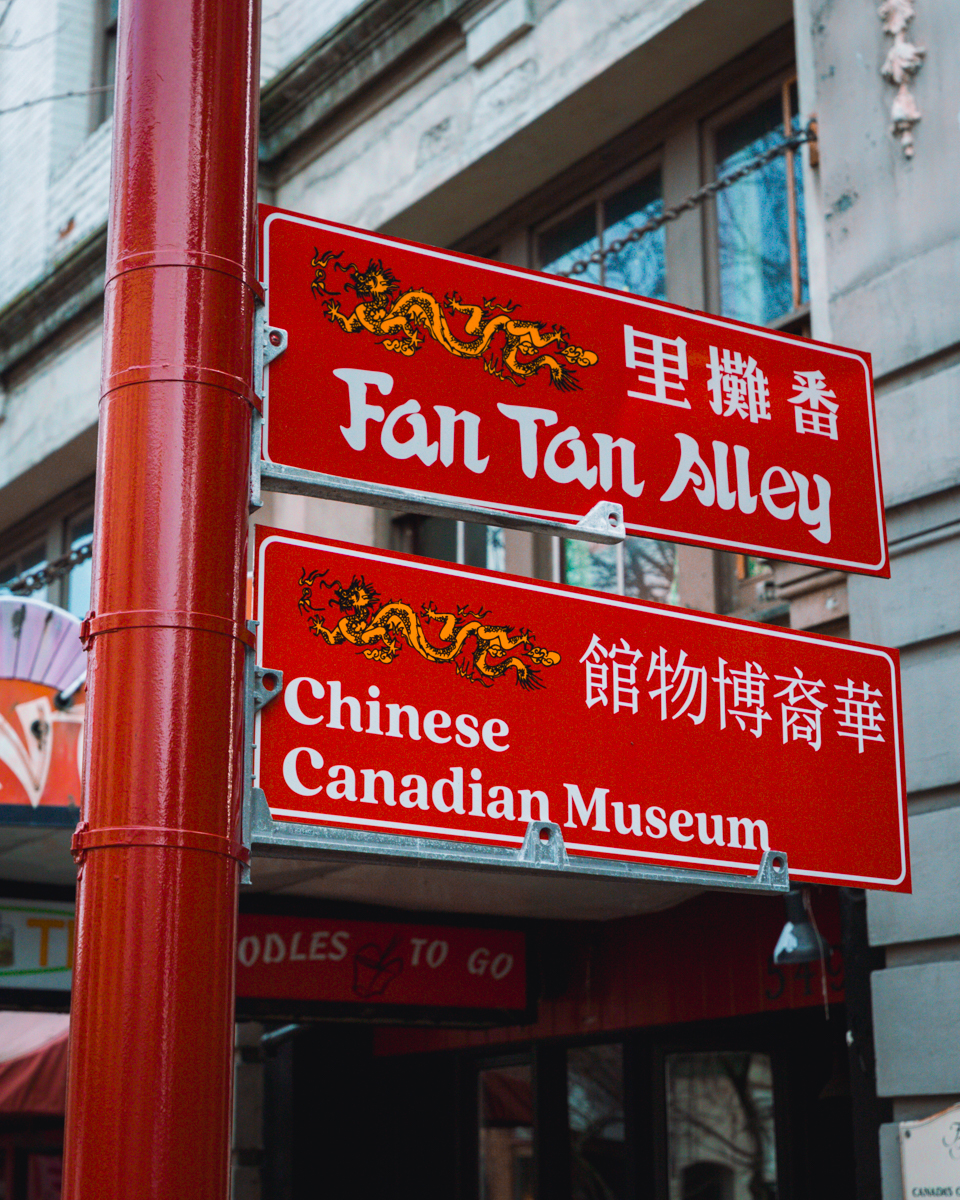
Overview of Victoria Chinatown
Historic Sites: It’s impossible to miss the iconic Gate of Harmonious Interest at the entrance to the Victoria Chinatown. Also of note is the historic Chinese Public School on Fisgard Street, showcasing a unique blend of Western and Eastern architectural styles. Fan Tan Alley, famous for being Canada’s narrowest street, is a fascinating spot once known for opium dens and brothels. Today, it’s a popular tourist attraction filled with unique shops and a small museum. Other highlights while visiting Canada’s oldest Chinatown include visiting North America’s oldest Chinese business and Canada’s oldest Chinese temple.
Markets and Shopping: You never know what you’ll find exploring the shops in and around the Victoria Chinatown. You can find a variety of goods from exotic teas at Silk Road Tea to Asian ceramics, kitchenware, and tchotchkes at Dragon Village. The more tourist-oriented shops in Fan Tan Alley include a record store and umbrella shop, as well as several stores selling locally made clothing and jewellery.
Culinary Delights: For foodies, Chinatown offers an array of dining options. Don Mee Restaurant is renowned for Chinese dim sum served trolley-style, while Little Yunnan offers traditional Yunnanese cuisine. For BBQ lovers, Wah Lai Yuen and Loy Sing are top choices. Finally, check out Wah Lai Yuen and Victoria BBQ House & Bakery for Chinese baked goods, Friends and Family Bake for Filipino-style treats, and Shizen Sushi for sushi.
Cultural Experiences: Time it right to see one of the outdoor festivals that take place in Chinatown in Victoria, and you’re in luck! As well as Chinese New Year, the annual Awakening Chinatown event provides an insight into Chinese culture, art, music, and dance, with chances to see lion dancing, Chinese opera, and kung fu. The Yen Wo Society houses the Tam Kung Temple, the oldest Chinese temple in Canada, where visitors can witness Chinese spiritual traditions.
Guided Tours: To deeply understand the history of Chinatown, consider joining a historical walking tour. These tours combine history with food, giving you a taste of both the past and present of this fascinating neighborhood.
Gate of Harmonious Interest: The Entrance to Chinatown Victoria
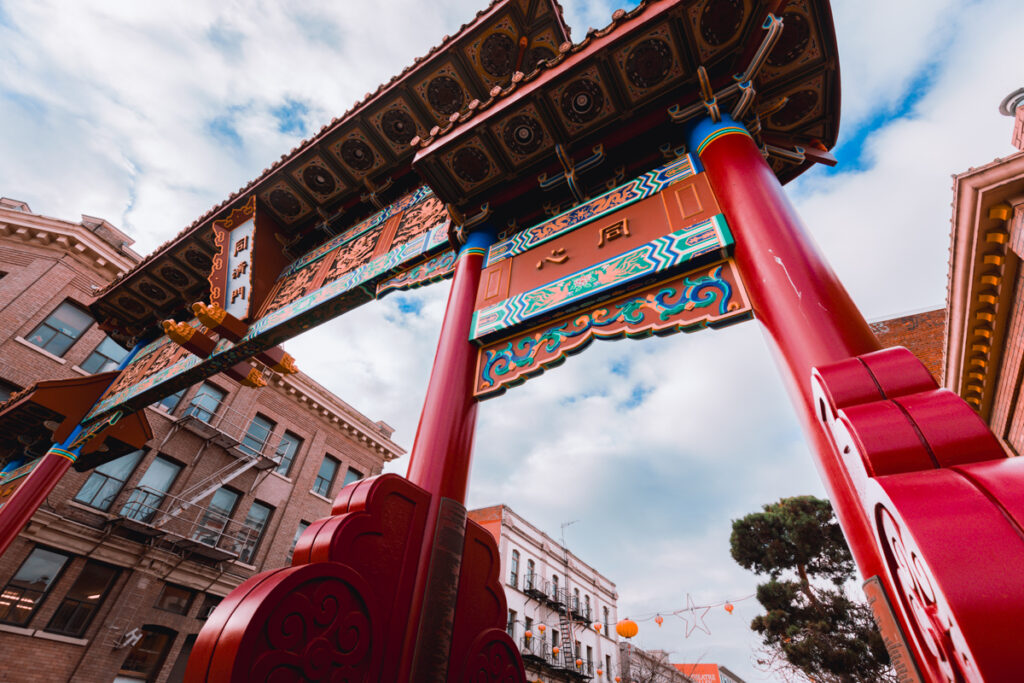
Erected in 1981 at the intersection of Fisgard Street and Government Street, the 38-foot Gate of Harmonious Interest marks the entrance to Canada’s oldest Chinatown, and is the first thing most visitors see. The gate was a result of a collaborative effort between the City of Victoria, the Chinese Consolidated Benevolent Association, and both Chinese and non-Chinese communities. It embodies the spirit of harmony, as indicated by the inscriptions “To work together with one heart” and “To help each other achieve harmony.”
Designed by Mickey Lam, then the City of Victoria’s urban design planner, the Gate of Harmonious Interest cost $130,000, funded partly by the B.C. provincial government, the local Chinese Canadian community, and other sources. This elaborately detailed red and gold gate is guarded by two hand-carved stone lions, gifts from Victoria’s Twin City, Suzhou (pronounced Soo-Joe), China. Adding to its historical significance, the gate houses two time capsules to be opened in 2081 and 2096 and features a plaque honoring 61 Chinese Canadians who fought and died for Canada in World War II.
Chinese Public School
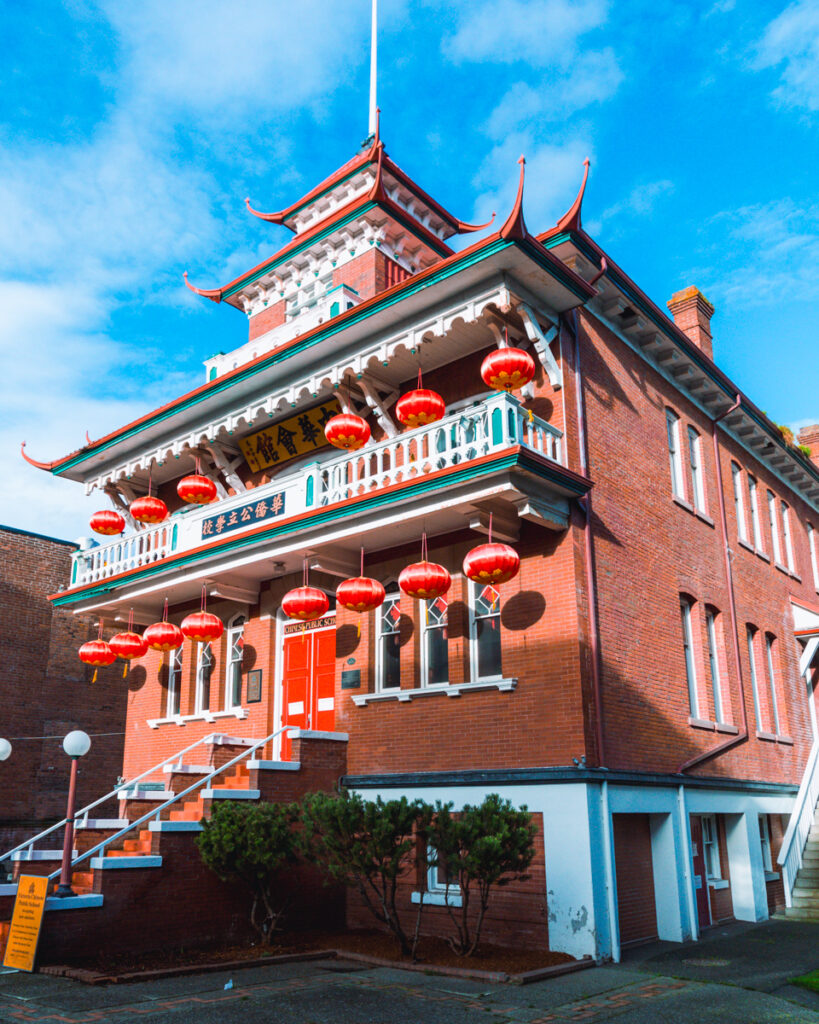
The Victoria Chinese Public School, situated at 636 Fisgard Street in Victoria’s Chinatown, is a notable architectural landmark. Designed in 1909 by Scottish architect David C. Frame, it showcases a unique fusion of Western and Chinese architectural styles. The school’s architecture, with elements like trefoil fretwork on the balcony and orientalized bracketed eaves, along with its pagoda-style roofline and tower contribute to its distinctive presence in the neighborhood.. Initially serving as the primary educational institution for Chinese children in Victoria, it has evolved to provide Chinese language and cultural education to the broader community, continuing a legacy of over a century.
Fan Tan Alley
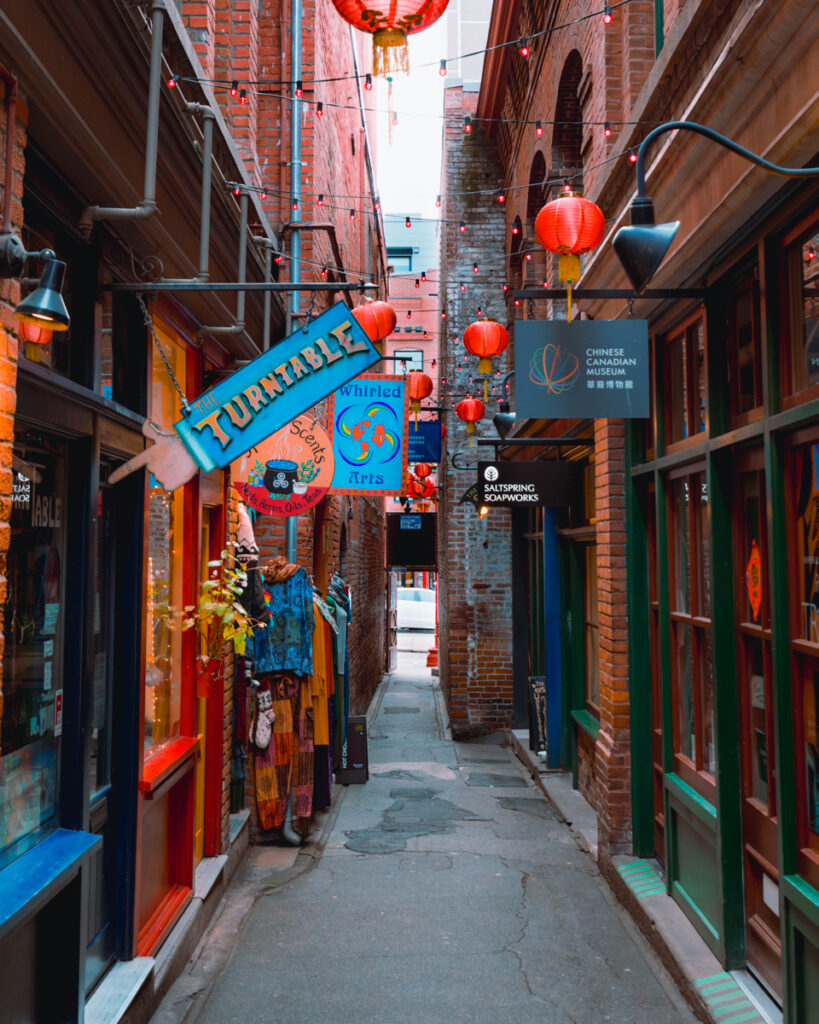
Fan Tan Alley is known for being the narrowest commercial street in North America. Measuring less than 0.9 meters (about 3 feet) at its narrowest point, this alley runs south from Fisgard Avenue to Pandora Avenue, nestled between Government Street and Store Street.
Historically, Fan Tan Alley was a central part of the bustling Chinatown life. Named after the Chinese gambling game “Fan-Tan”, it was originally known for housing opium factories until opium production became illegal in 1908. The alley subsequently became famous for gambling dens and brothels, particularly during the 1910s. However, with police raids and declining visitors, the gambling clubs were closed down in the 1950s and 60s, leading to a period of disrepair.
In the 1970s and 80s, efforts led by David Chuenyan Lai revitalized Fan Tan Alley. Today, it stands as a heritage property, designated as such by the local government in 2001. The alley now serves as a vibrant tourist destination, home to various small shops, restaurants, apartments, offices, and the Chinese Canadian Museum.
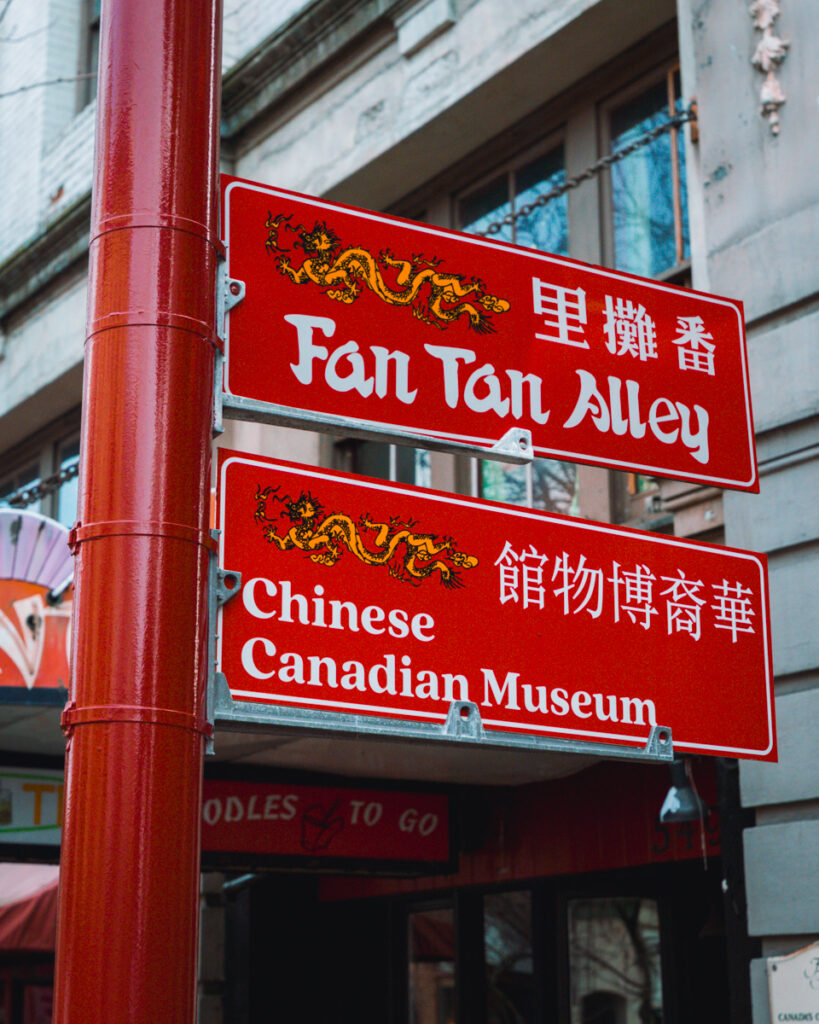
Chinese Canadian Museum (Chinatown Victoria branch)
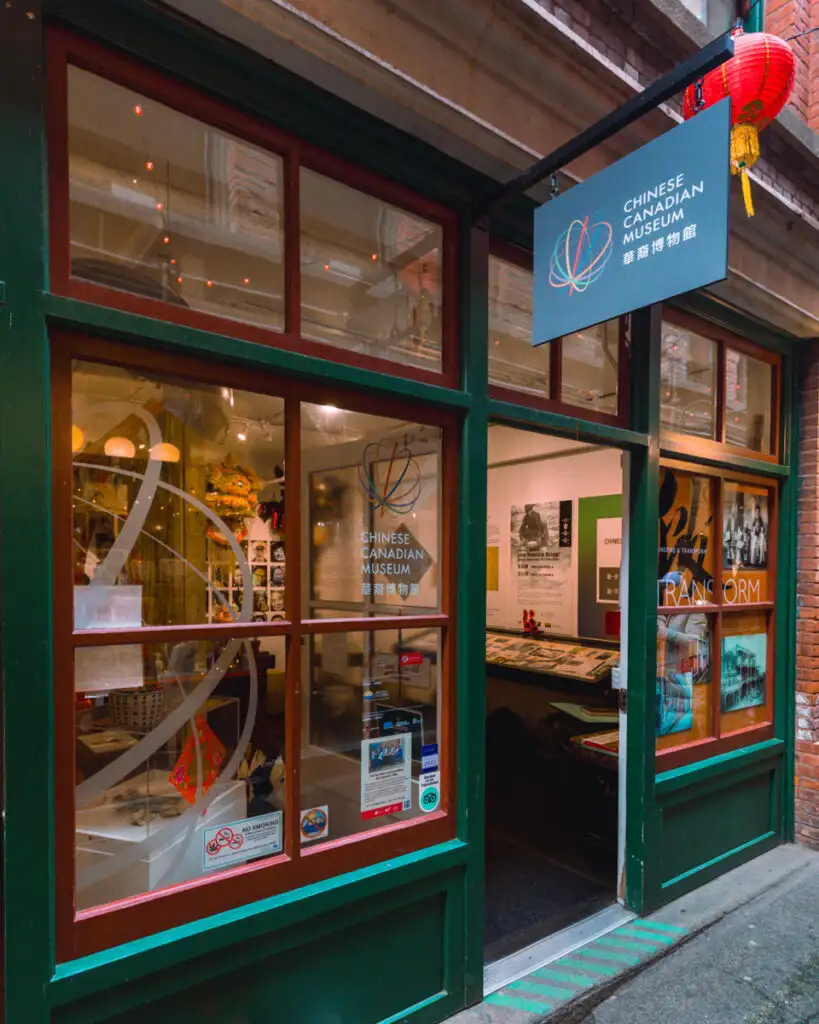
10-14 Fan Tan Alley once housed a gambling club known as “Big Club” or “Ai Goon” in the Toisan dialect. Today it’s an exhibit site of the Chinese Canadian Museum, offering a unique opportunity for visitors to engage with the rich history of Chinese Canadians in Victoria. Exhibits here have explored topics such as the initial settlements of Chinese-Canadian settlers in the area, the history of Chinese migrants in British Columbia during the 1850s gold rush era, and influential figures in the community. The small museum doesn’t take too long to walk through, but is nonetheless an amazing way to learn more about the history of Victoria’s historic Chinatown. Entry is by donation.
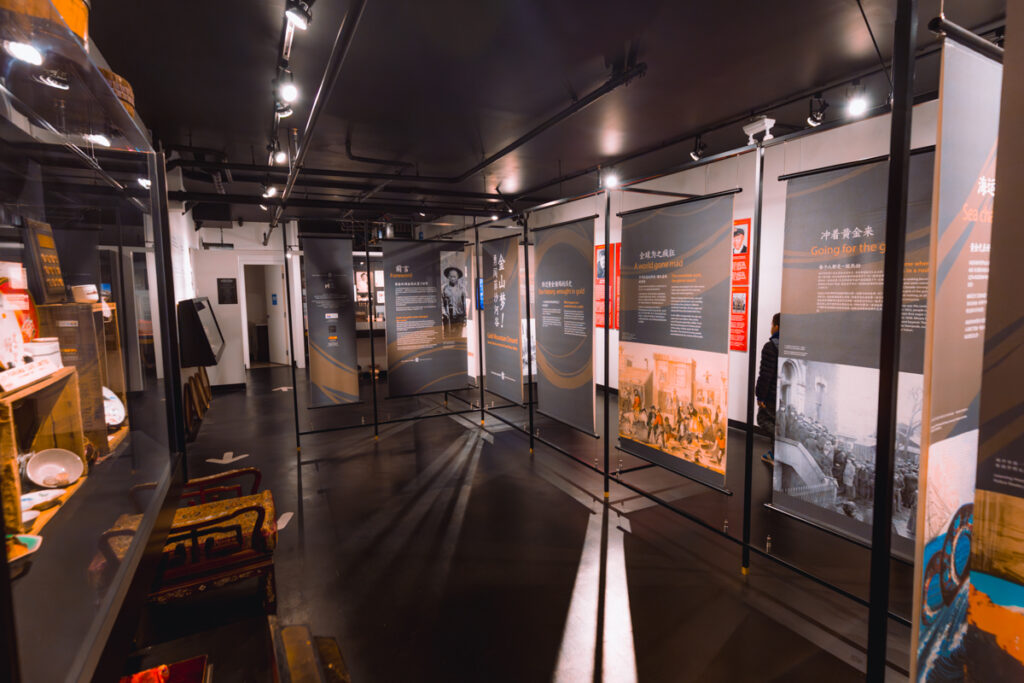
Tam Kung Temple: A Chinatown Victoria Secret

The story of Canada’s oldest Chinese temple began in the 1860s when a Hakka gold seeker brought a statuette of Tam Kung for protection. Initially the statuette was placed in a wooden niche-like box by the mouth of the Johnson Street Ravine (approximately where market square is today) where it became a focal point of worship for the Chinese community. The temple itself was established in 1876 but in 18980 was ravaged by fire, destroying banners, flags, and intricate embroideries. Remarkably, the statuette of Tam Kung remained unscathed on its altar. The Yen Wo Society, formed to care for the temple, built a new building on the site in 1912, which still stands today.
The ritual practices within the temple are deeply rooted in tradition. Believers seek guidance from Tam Kung through a divination process involving numbered bamboo sticks, each corresponding to an oracular verse. The temple also features ancient incense burners, a ritual drum and bell, and a wall stove for burning paper money – all integral parts of the offering ceremonies. Twice a year, the temple becomes the hub of significant celebrations, with whole roast pigs brought in for Tam Kung’s birth and death anniversaries. These are the biggest events, attracting many for good luck. However, daily worship at the temple is usually a more solitary and introspective practice.
The Tam Kung Temple is open to the public from 10 to 4 daily, and donations to help protect the historic site are welcomed.
Silk Road Tea
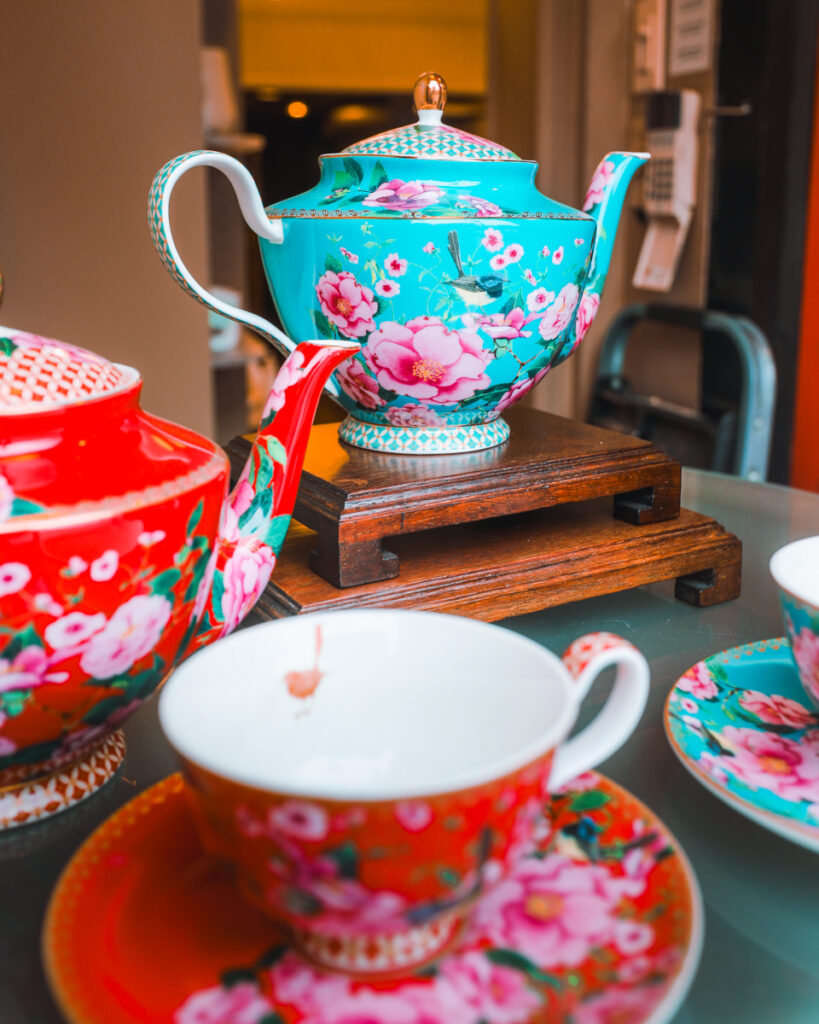
Silk Road Tea, located near the entrance of Victoria’s Chinatown, is renowned for its exquisite award-winning organic teas and unique tea-related products and wares. Founded in 1992 by tea expert Daniela Cubelic, the store offers a diverse range of high-quality, organic teas, alongside skin-care products made from natural ingredients. Silk Road Tea’s tea tasting bar allows customers to sample various blends which are available both in bags and loose-leaf, and the store often hosts workshops on tea-related topics. If that’s not your cup of tea, the shop includes a spa that uses tea-based products for treatments, providing a holistic experience that blends wellness with the culture of tea.
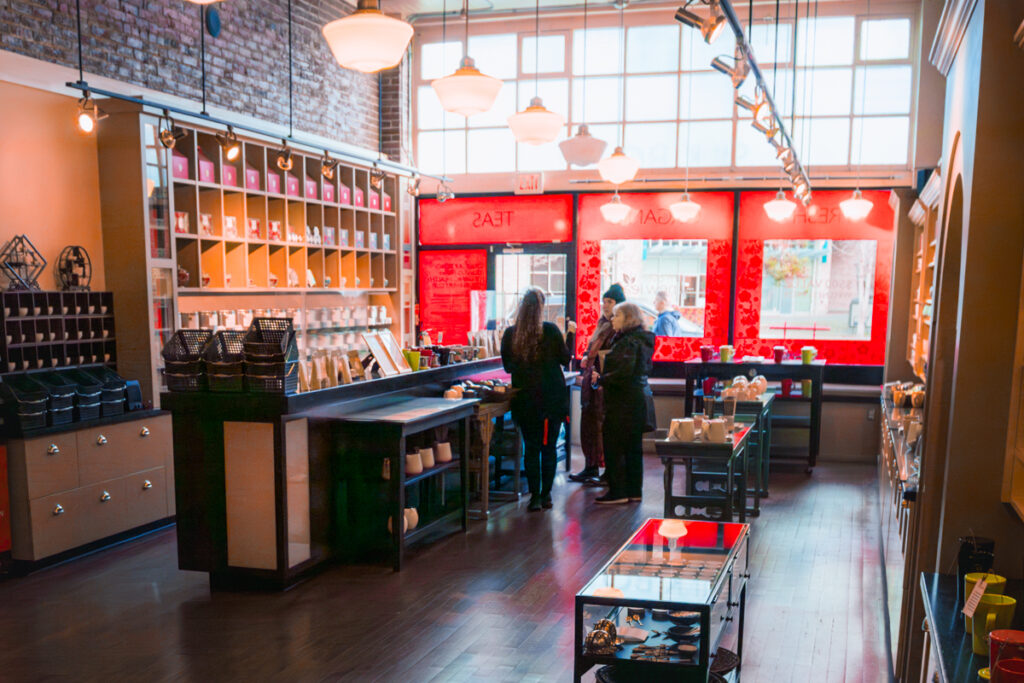
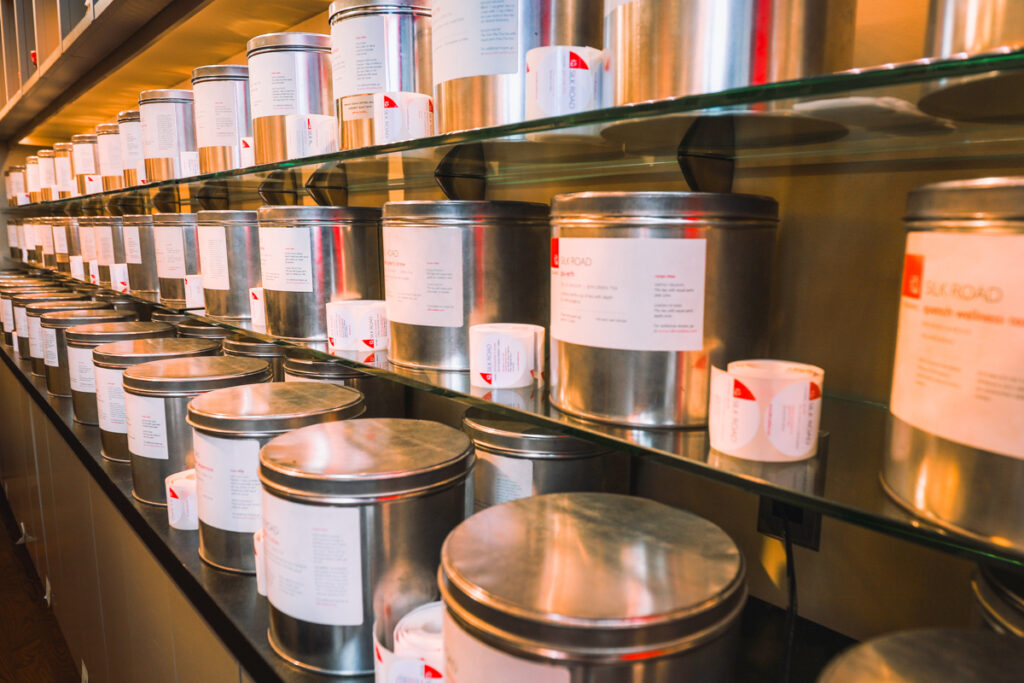
Shop Victoria Chinatown for the Knick-Knacks You Didn’t Know You Needed
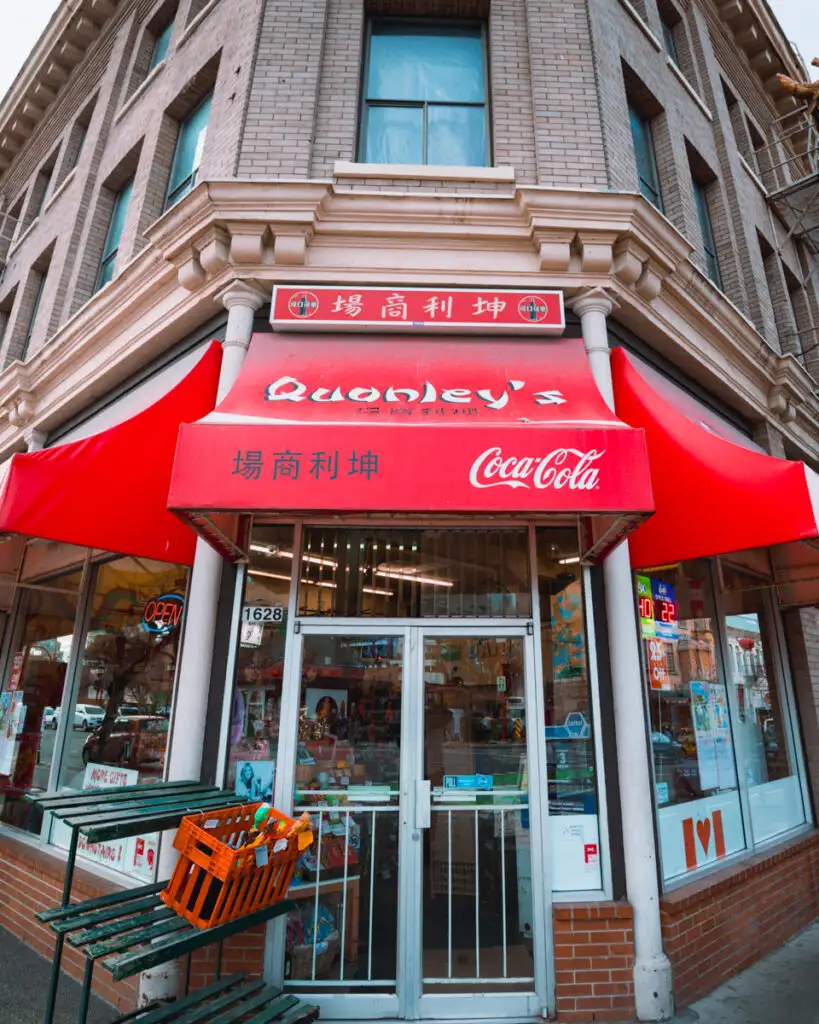
Whether it’s a Chinese teapot, lantern, lucky cat, or something else, whatever it is you’re looking for (or didn’t know you were looking for) is available somewhere in the crowded aisles of the shops of Chinatown. Dragon Village is the place to go for Asian household goods and cookware, and Quonley’s is the place to be for snacks and all kind of tchotchkes. Various other stores sell clothing, incense, or whatever else you can think of.

Try Something New at Chinese Groceries
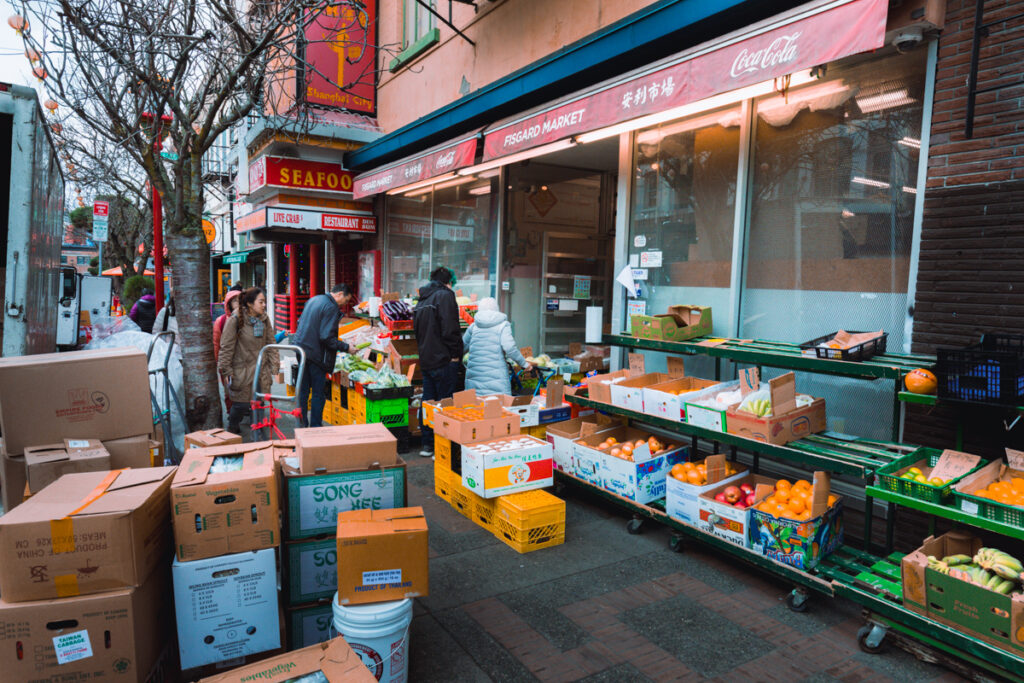
Exploring Chinese groceries in Chinatown can be a fun culinary adventure for the home cook or for those just looking for their next favourite snack. These markets offer an extensive range of unique and authentic ingredients, often at favorable prices. You can find vegetables like bok choy and Chinese broccoli, Chinese eggplant, and herbs such as Thai basil and lemongrass. The stores are also stocked with an array of rice and noodles, sauces, condiments, and various other ingredients challenging to find in regular grocery stores, not to mention an extensive selection of teas. For those with a sweet tooth, there are treats like Pocky sticks, Hi-Chews, Chinese candies, and countless other surprises. These groceries are like treasure troves for those seeking to explore new flavors and recreate authentic Asian dishes. Victoria’s Chinatown is home to three of these groceries, all within walking distance: Fisgard Market, A&T Grocery, and Tai Sang Grocery.
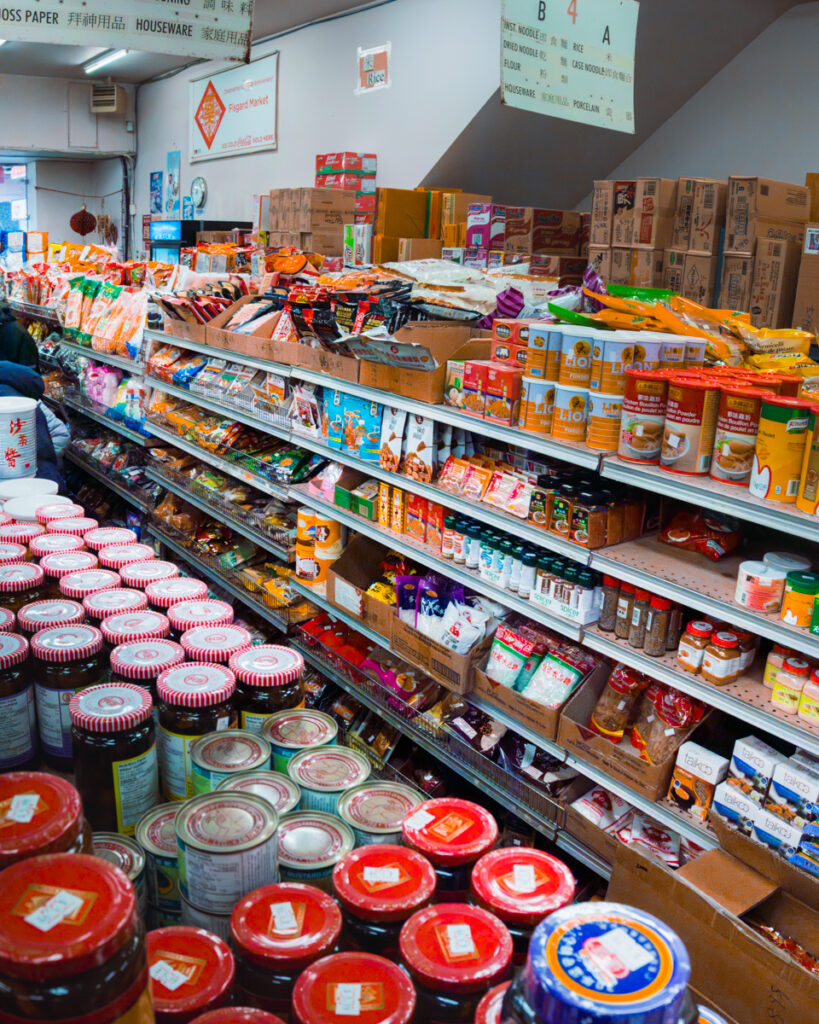
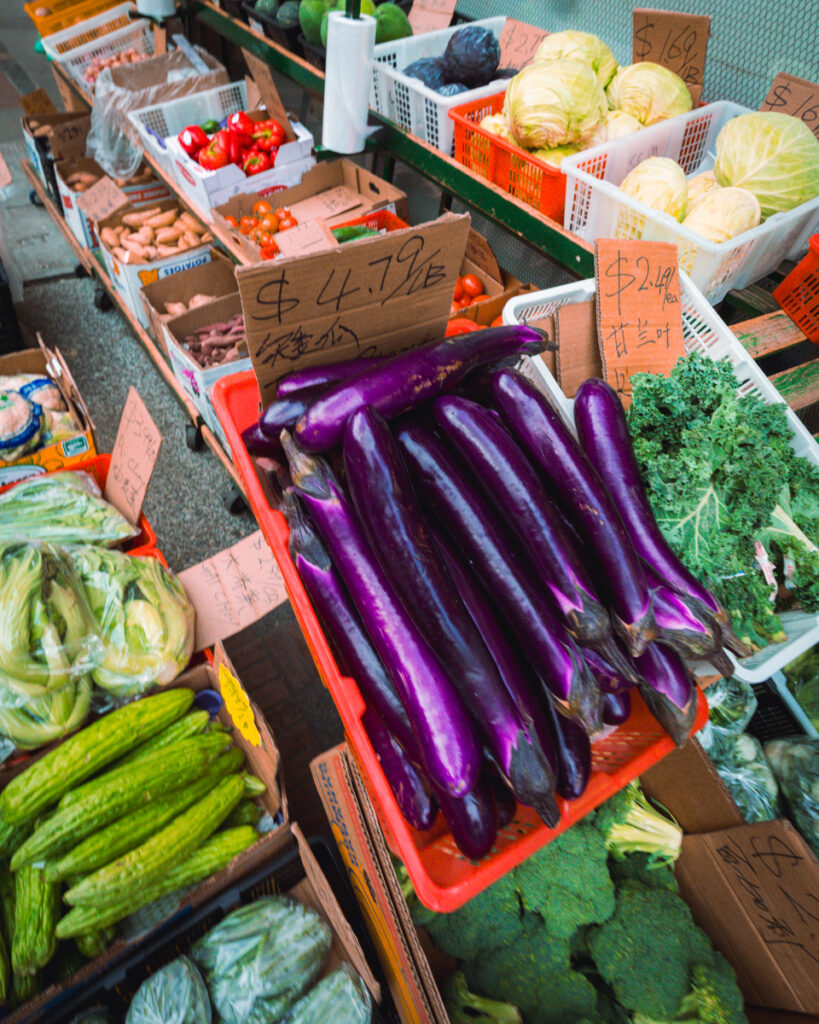
Wah Lai Yuen Bakery and Restaurant

It’s hard to pick a favourite at this classic Chinatown eatery: the fresh crispy pork and BBQ duck hanging in the window, or the warm and slightly-sweet BBQ pork buns sold inside. A staple of Victoria’s Chinatown for over 30 years, Wah Lai Yuen Bakery and Restaurant is perfect as a sit-down restaurant for some of the best congees and soups in Victoria, or grab-and-go a treat as you continue to walk around Chinatown.
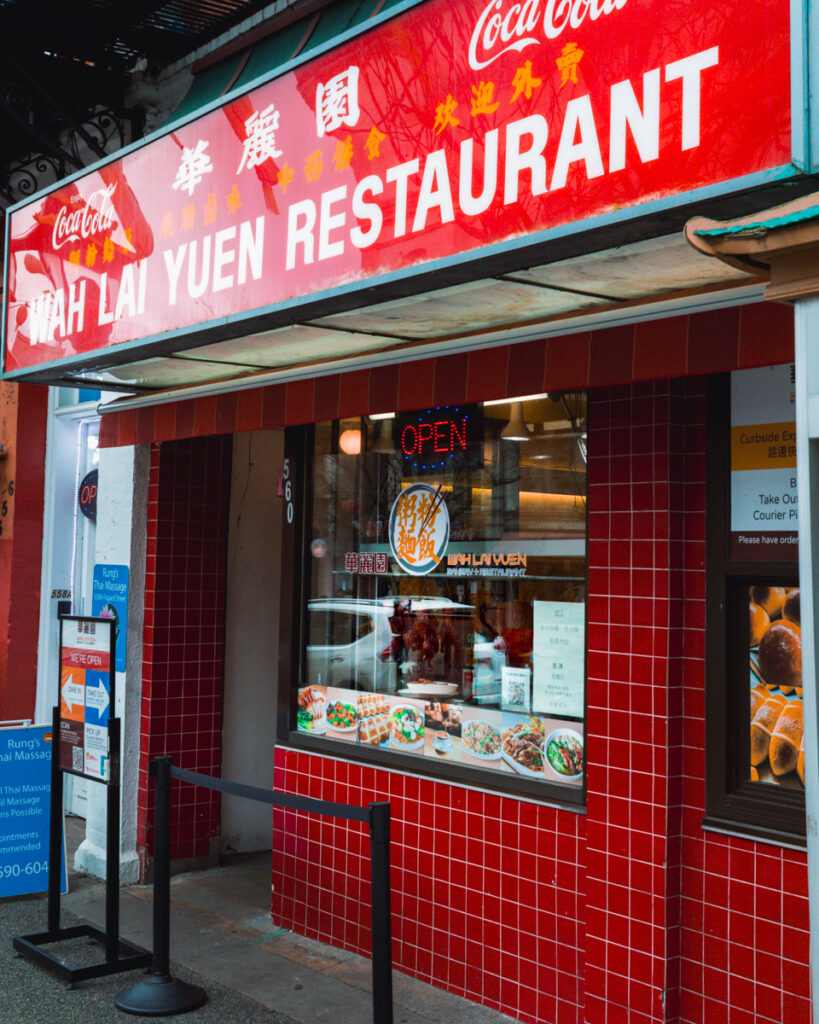
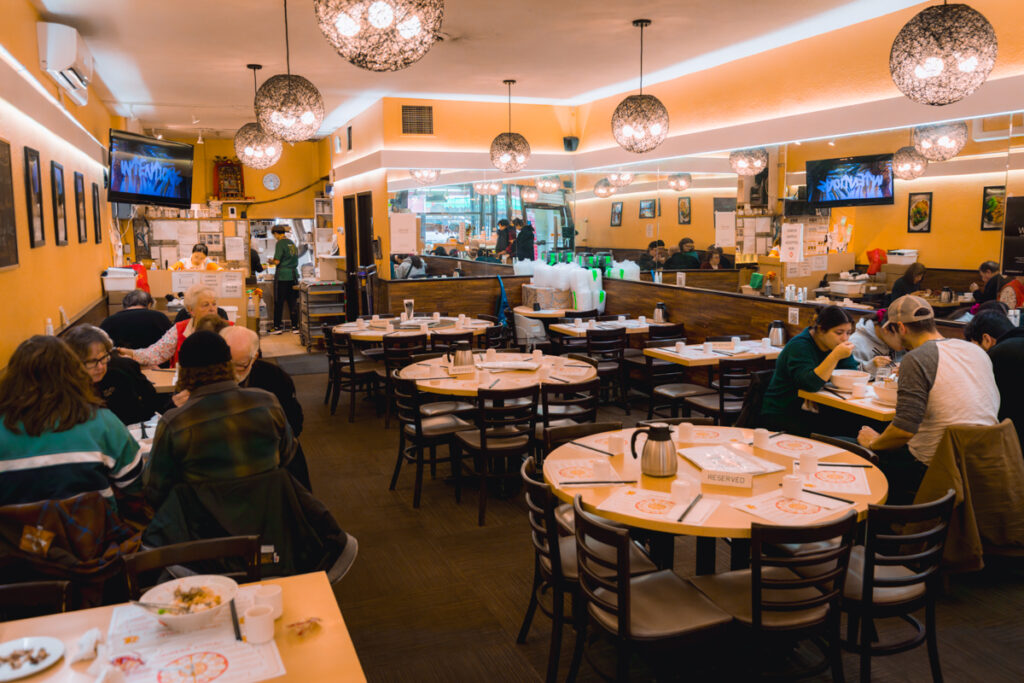
Victoria BBQ House & Bakery
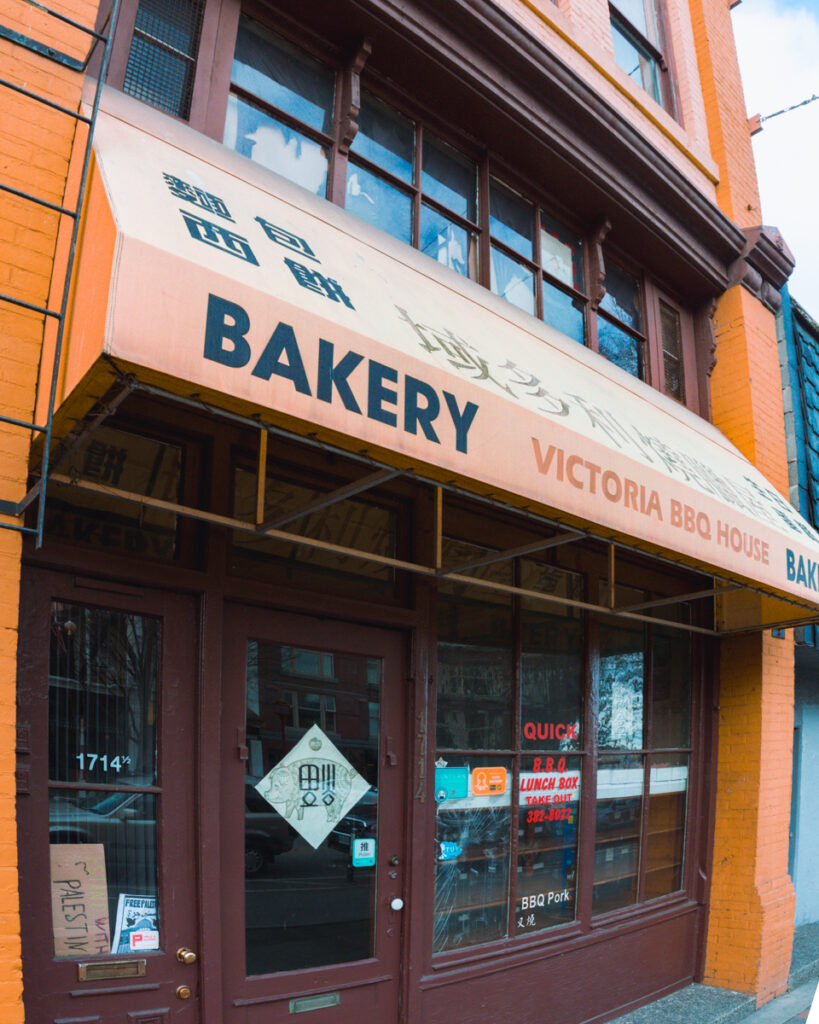
Victoria BBQ House and Bakery, located near the Chinatown Gate at Government and Fisgard in Victoria, offers a unique culinary experience with its array of Chinese baked and steamed goods. Run by Mrs. Ken Ng, the bakery is known for its delicious barbecue dishes like char siu), barbecue duck, chicken, and crispy pork belly. The highlight here is the savoury and sweet baked and fried treats summoning customers in from the window display. From crispy golden BBQ pork buns to soft and sweet pineapple buns, there’s a range of treats to suit any mood. My recommendation is to get here early however, as nearly everything on offer is tastiest when fresh and warm.
Friends and Family Bake
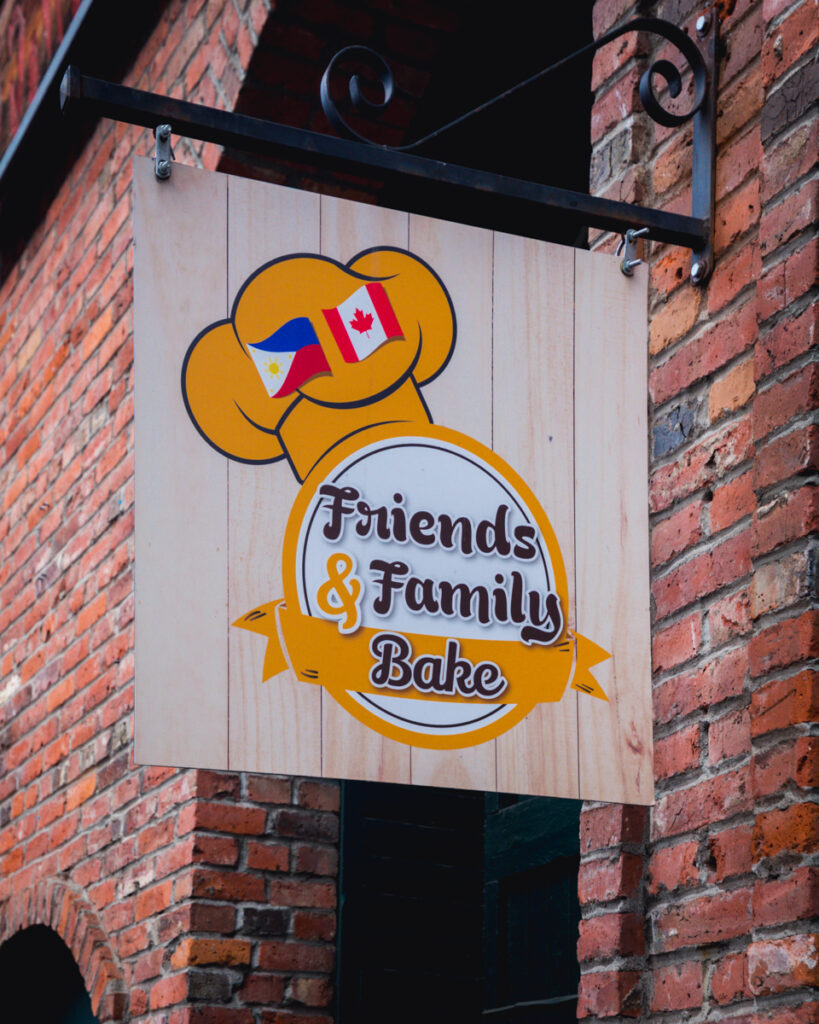
Filipino bakeries, known in the Philipines as “panaderias,” haven’t really had much traction internationally outside of OFW communities. That said, Friends & Family Bake has managed to amass a loyal following since opening in early 2023. Known for a delightful array of breads and pastries that are both sweet and savory, as well as their super friendly customer service, they’ve definitely made an impression. Whether you already have a favourite Filipino treat, or it’s your first try, they’re sure to have something just for you. Popular items include Pandesal, a staple breakfast bread; Ensaymada, a buttery bread topped with sugar and cheese; and Pan de Coco, a soft bread filled with sweet coconut. Other favorites are Spanish Bread, similar to pandesal but filled with a sweet mixture; Ube Kababayan, a simple ube-flavoured muffin; and Chocolate Crinkles, a sweet and chewy chocolate cookie with a cracked surface.
Loy Sing Meat Market
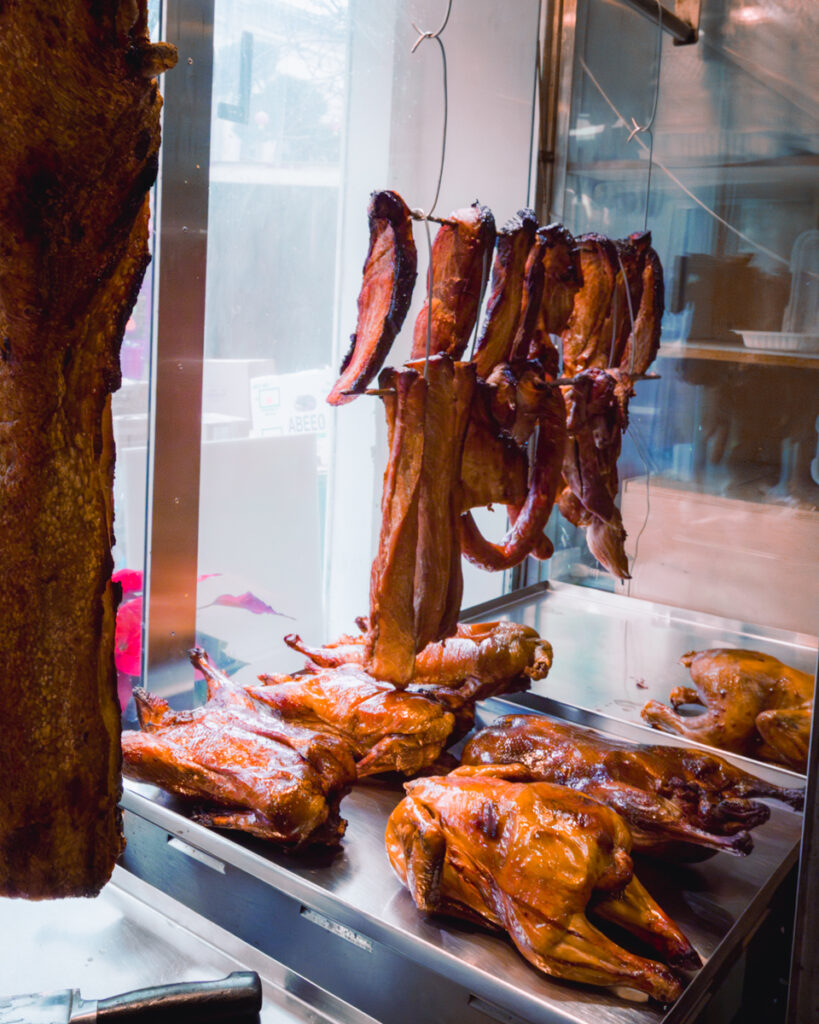
Loy Sing Meat Market, located on Fisgard Street in Victoria’s historic Chinatown, holds the distinction of being the oldest Chinese business in North America, having been operational for over 130 years, and passed through the hands of about four families. This enduring establishment is renowned for its preparation and serving of Chinese delicacies, particularly its fresh, daily-prepared whole roast pig. Daniel Zheng and his wife Shelly Rong, who have owned Loy Sing for the past 28 years, have maintained the traditional methods and recipes, which Daniel learned from the previous owner.
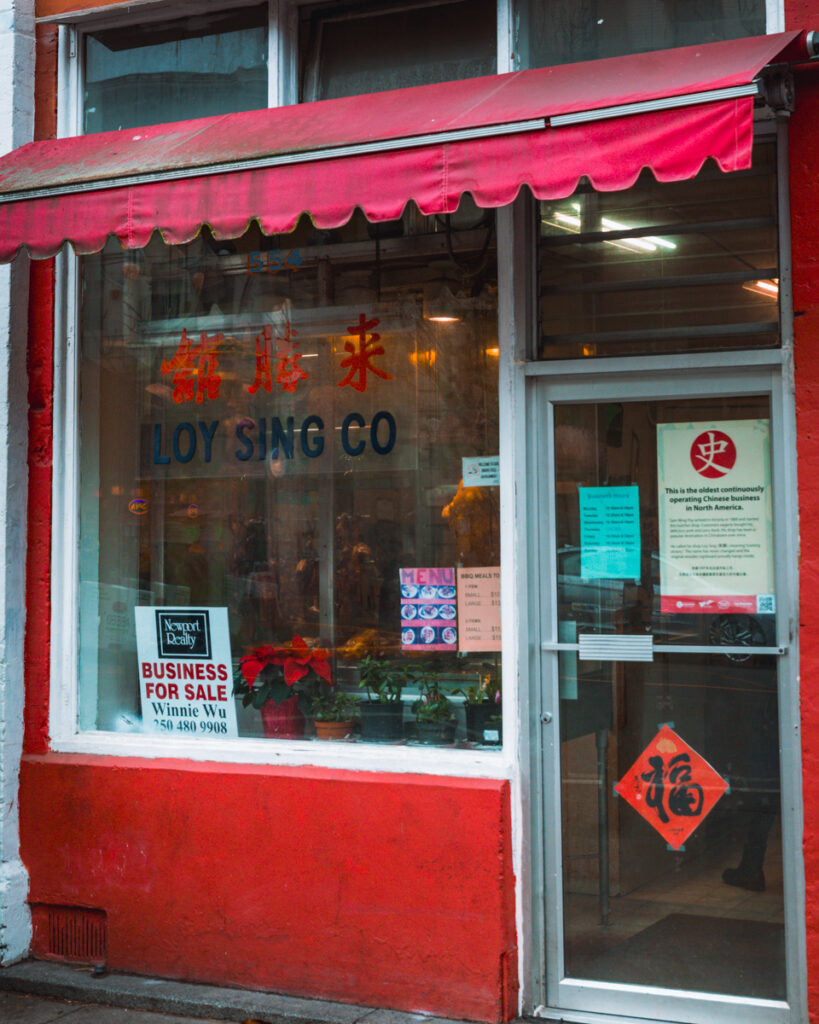
Little Yunnan

Crossing the Bridge Rice Noodles is a dish from Yunnan Province that involves a little DIY. Its distinct serving style involves cooking the meat and separately plated vegetables in the hot soup at the table, ensuring freshness and flavor. The name originates from a story during the Qing Dynasty, where a scholar’s wife devised a way to keep his meals warm by carrying ingredients separately and combining them once she’d crossed the bridge to reach him on the island where he was studying.
Crossing the Bridge Rice Noodles is the signature dish at Little Yunnan, a small Chinese restaurant that’s a little different from the standard Cantonese/Canadian fare that is referred to under the umbrella of “Chinese Food”. It’s a great opportunity to try authentic Yunnanese cuisine, and one of the best places to eat in Victoria’s Chinatown.
Shizen Sushi
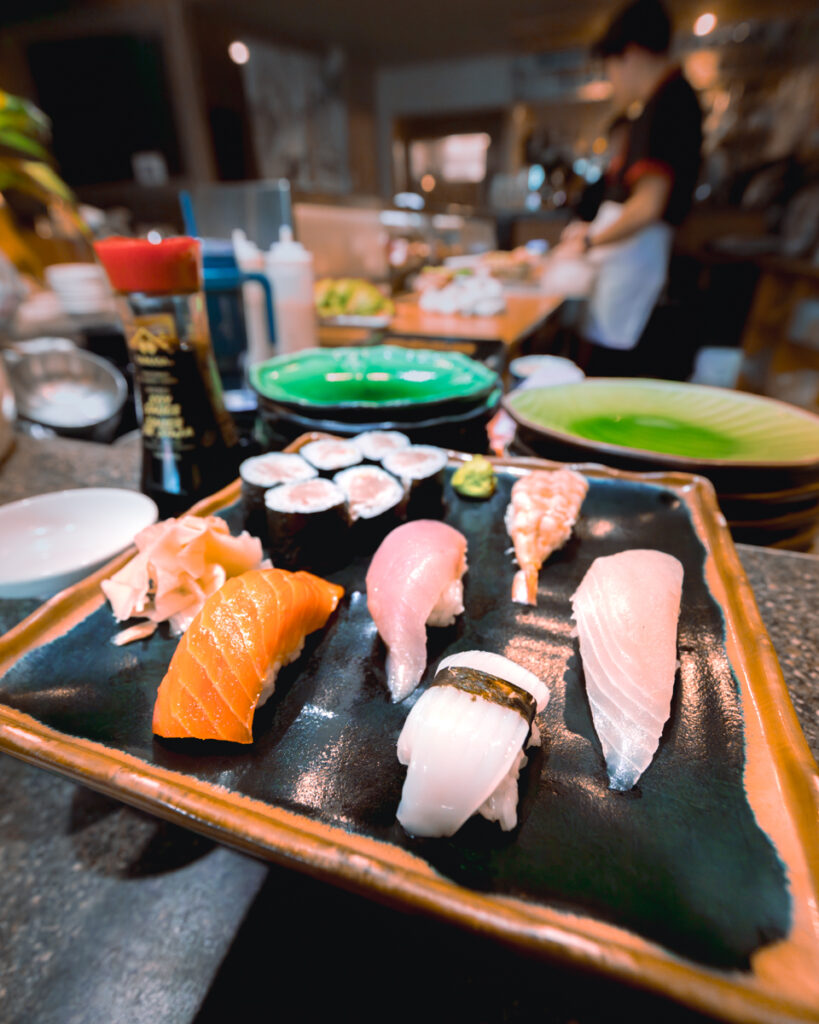
Most people would be surprised to learn that the origins of sushi weren’t in Japan, but in ancient China, where it originated as a method for preserving fish in fermented rice. It spread to Japan and during the Edo period (1603–1867), vinegar replaced fermented rice, giving rise to sushi as we know it today. It wasn’t until the 1960s that it was introduced to North America however. Vancouver in particular saw a significant increase in sushi outlets, growing from 3 in 1976 to more than 600 by 2014, with Victoria seeing a similar boom.
All this to say, Victorians love their sushi. In fact, they’re so passionate that I’ve made sure not to list my favourite sushi spots anywhere on this website, because if I did I would surely get more than a few angry emails disagreeing with my selection. However, if you’re in Chinatown looking for sushi then Shizen Sushi is an excellent choice. This hole-in-the wall sushi joint has amassed a loyal following since it opened in 2006, and is known not only for its delicious and fresh sushi, but also for the super friendly staff.
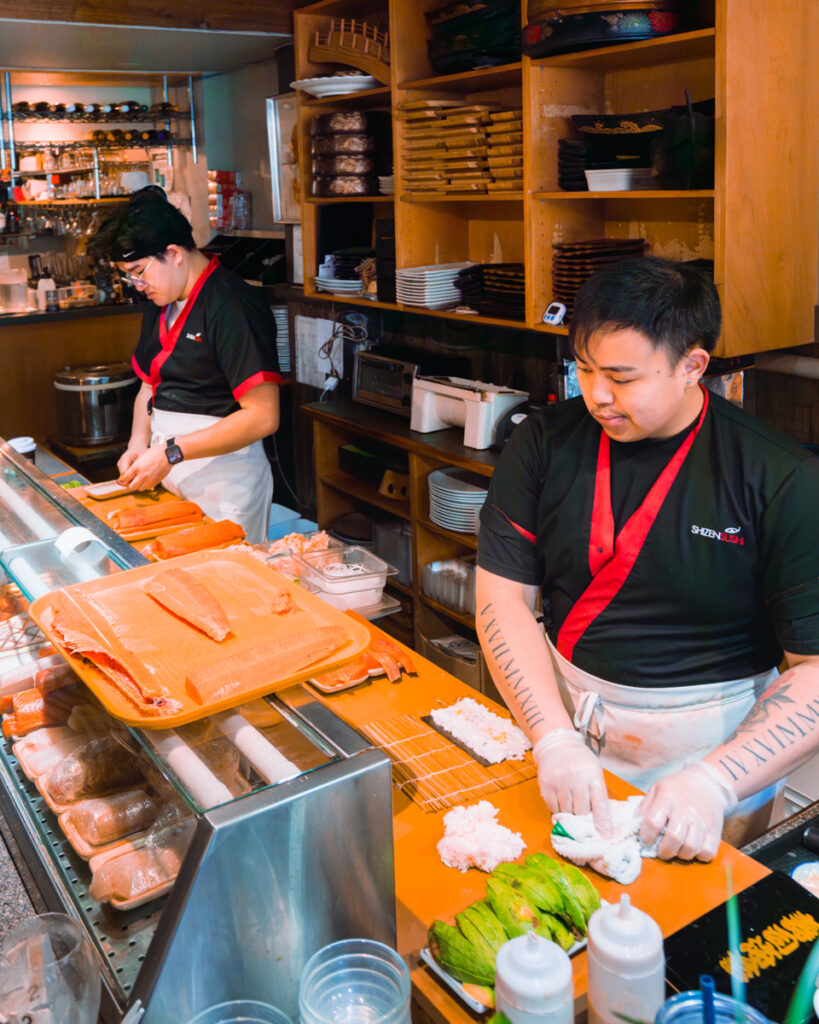
Don Mee Seafood Restaurant
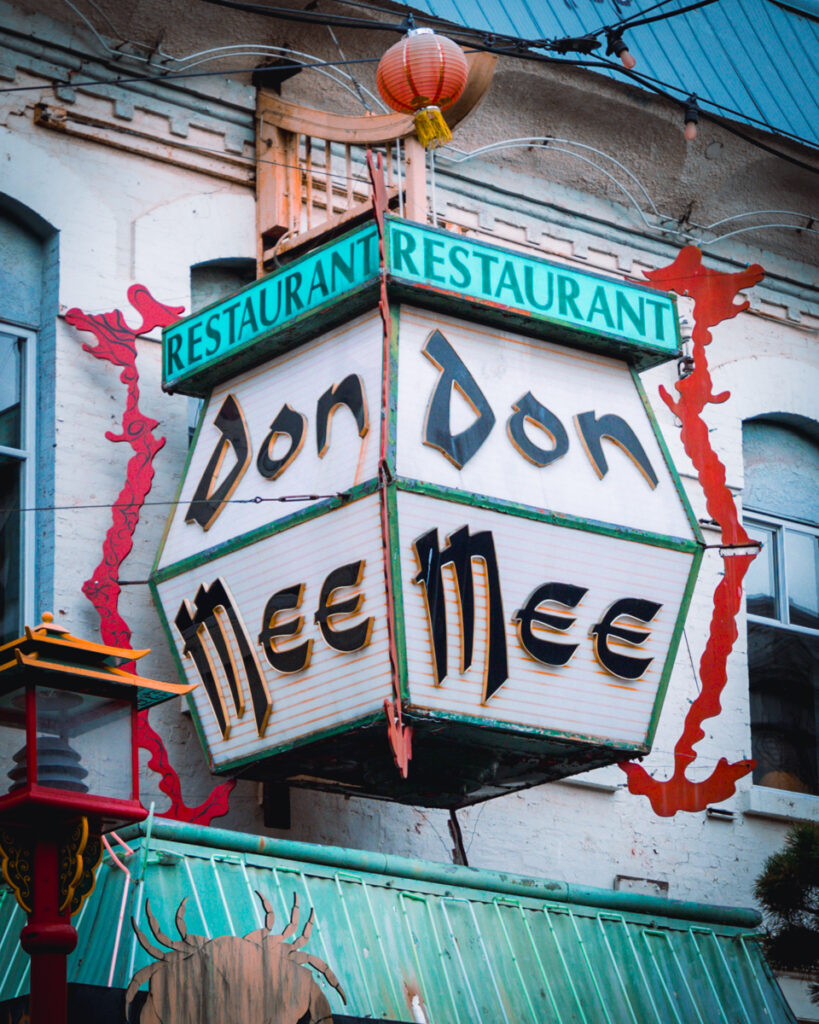
Don Mee Seafood Restaurant, a cornerstone in Victoria’s Chinatown for over 80 years, is known not only as a prominent dining destination passed down through generations, but also as the oldest restaurant in Victoria. Renowned for its lively atmosphere and traditional dim sum service, Don Mee offers a daily dim sum lunch featuring a variety of dishes presented trolley-style. This style of serving allows guests to visually select their choices from trolleys piled high with steaming bamboo baskets being pushed around the restaurant. These carts carry an assortment of dumplings, buns, rolls, and more.
The tradition of serving dim sum on carts originated in the teahouses of ancient China. Initially, these small, savory snacks were served alongside tea to satisfy hunger and enhance the tea-drinking experience. Over time, dim sum evolved into a diverse culinary tradition with regional variations across China and Asia. These days it’s less and less common however, as more customers prefer their dim sum made to order.
